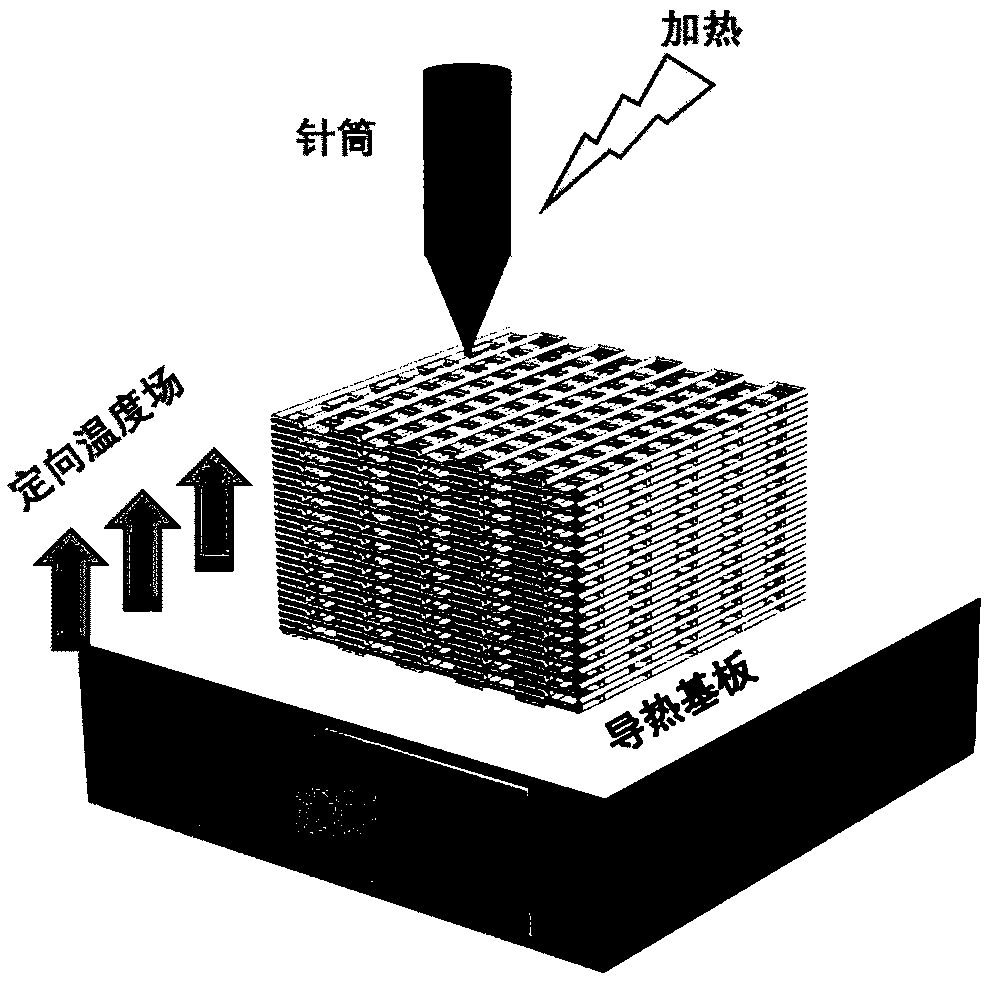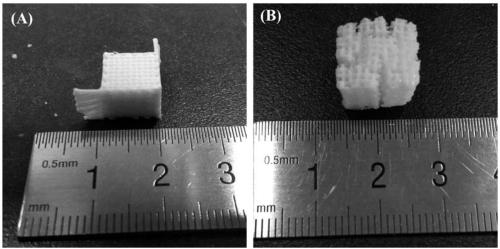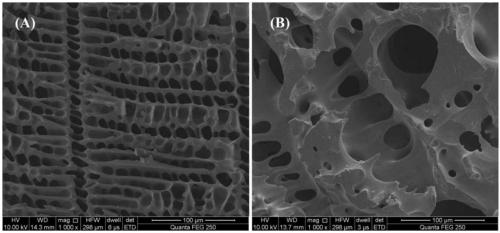Preparation method of bionic porous ceramic with complex three-dimensional structure
A three-dimensional structure, complex technology, applied in the field of preparation of complex three-dimensional structure ceramics
- Summary
- Abstract
- Description
- Claims
- Application Information
AI Technical Summary
Problems solved by technology
Method used
Image
Examples
example 1
[0060] Polycarbosilane is used as the ceramic precursor, and camphene is used as the organic solvent to prepare multi-scale porous and complex three-dimensional silicon carbide ceramics by the method of the present invention.
[0061] Heat the camphene to above 35°C to fully melt it. Subsequently, 10wt.%-20wt.% of polycarbosilane powder is added, and the powder is fully dissolved in the camphene under the action of magnetic stirring. Then, 20wt.% (mass ratio of crosslinking agent to ceramic precursor, the same below) of divinylbenzene was added dropwise as a crosslinking agent. Under the environment of 120°C, magnetic stirring for 3h promoted partial crosslinking of polycarbosilane.
[0062] The slurry is then placed in a syringe, the temperature of the syringe is increased to 35°C or more, and it is allowed to stand for 1-2 hours for defoaming. Then adjust the temperature of the syringe to 25-35°C to adjust the rheological properties of the slurry to an appropriate range. At th...
example 2
[0067] Polycarbosilane is used as a ceramic precursor, and cyclooctane is used as an organic solvent to prepare multi-scale porous and complex three-dimensional silicon carbide ceramics by the method of the present invention.
[0068] Heat the cyclooctane to above 14°C to fully melt it. Subsequently, 10wt.%-20wt.% of polycarbosilane powder is added, and the powder is fully dissolved in cyclooctane under the action of magnetic stirring. Then, 20wt.% (mass ratio of crosslinking agent to ceramic precursor, the same below) of divinylbenzene was added dropwise as a crosslinking agent. Under the environment of 120°C, magnetic stirring for 3h promoted partial crosslinking of polycarbosilane.
[0069] The slurry is then placed in a syringe, the temperature of the syringe is raised to above 14°C, and it is allowed to stand for 1-2 hours for defoaming treatment. Then adjust the temperature of the syringe to 4-14°C, and adjust the rheological properties of the slurry to an appropriate range...
example 3
[0074] Polyoxysilane is used as a ceramic precursor, and tert-butanol is used as an organic solvent to prepare a multi-scale porous complex three-dimensional structure carbon-silicon-oxygen ternary ceramic by adopting the method of the present invention.
[0075] Heat tert-butanol to above 28°C to fully melt it. Subsequently, 10-20 wt.% of polyoxysilane powder is added, and the powder is fully dissolved in tert-butanol under the action of magnetic stirring. Then, 10-20wt.% (mass ratio of crosslinking agent to ceramic precursor, the same below) of dibutyltin dilaurate is added dropwise as a crosslinking agent. Under the environment of 50-60℃, magnetic stirring for 3h promotes partial crosslinking of polyoxysilane.
[0076] The slurry is then placed in a syringe, the temperature of the syringe is raised to above 28°C, and it is allowed to stand for 1-2 hours for defoaming treatment. Then adjust the temperature of the syringe to 18-28°C to adjust the rheological properties of the sl...
PUM
| Property | Measurement | Unit |
|---|---|---|
| tackiness | aaaaa | aaaaa |
| boiling point | aaaaa | aaaaa |
| boiling point | aaaaa | aaaaa |
Abstract
Description
Claims
Application Information
 Login to View More
Login to View More - R&D
- Intellectual Property
- Life Sciences
- Materials
- Tech Scout
- Unparalleled Data Quality
- Higher Quality Content
- 60% Fewer Hallucinations
Browse by: Latest US Patents, China's latest patents, Technical Efficacy Thesaurus, Application Domain, Technology Topic, Popular Technical Reports.
© 2025 PatSnap. All rights reserved.Legal|Privacy policy|Modern Slavery Act Transparency Statement|Sitemap|About US| Contact US: help@patsnap.com



